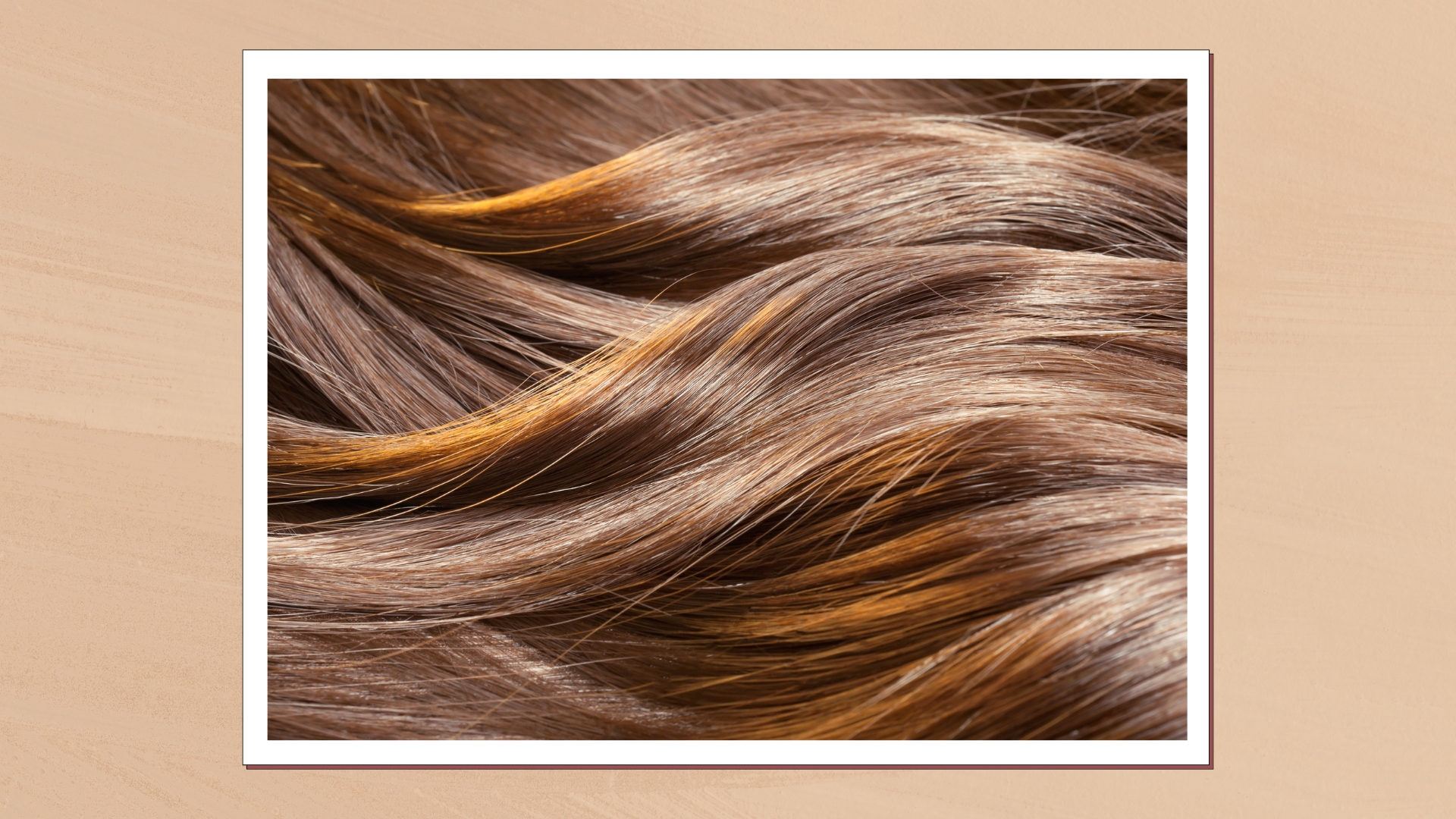Everything you need to know before getting hair extensions, according to the pros
Want longer locks, fast? Here's what to know *before* opting for hair extensions, per industry experts...


Hair extensions offer a quick solution for those seeking longer locks but there are several things to consider before opting for the technique. Thus, we've asked the pros to outline everything you need to know, pre-appointment...
There’s a belief that as women get older they should wear their hair shorter but there is however, a throng of over 40s women, myself included, who disprove this notion and style their lengths with pride. Just look at Naomi Campbell, Julia Roberts and Julianne Moore - point made. That said, for many, lengthy tresses may feel unachievable, even when you've got the best conditioners for fine hair (or whatever your hair type) and best hair masks in your arsenal, to promote healthy and strong strands. After all, hair generally grows between 0.5 and 1.7 centimetres per month, meaning that fulfilling the long hair of your dreams can feel like a waiting game. Unless that is, you get hair extensions, which is exactly what I did and it was pure magic, like someone had waved a wand over my fine lengths and ta-da, thicker, fuller and longer lengths - everything my natural hair would never be.
Once only favoured by the elite, hair extensions are now more accessible than ever. But where do you start? We asked extensionist pros, Inanch Emir of Inanch London, and Christopher Laird, Co-Director of November Collective, what to consider before getting them...
What to know before getting hair extensions
As mentioned, while hair extensions can be transformative, they're not as straightforward as just deciding you want them, booking in for a normal hair appointment and then leaving with luscious long strands. There is also first the question of what type of extension to opt for, then the upkeep of your newly elongated locks and of course, your post-hair extension routine to consider.
Thankfully the pros have come to our rescue and shared all the intel you could need, starting with the types of hair extensions available...
1. There are different types of hair extensions
"A lot of people come into the salon with an idea of the kind of extensions they want, but these might not be suitable for their hair type or the results they are looking to achieve," says Christopher. From bonds and tapes to clip-ins and 'fillers,' knowing which type of extension technique will suit your hair, your lifestyle and your budget is the first port of call. "This decision should be led by the specialist, so go to your appointment with an open mind."
Pre-bonded keratin hair extensions
Sign up for the woman&home newsletter
Sign up to our free daily email for the latest royal and entertainment news, interesting opinion, expert advice on styling and beauty trends, and no-nonsense guides to the health and wellness questions you want answered.
These were my first ever foray into extensions consisting of polymer nail tipped hair strands which fuse onto your hair using either a hot or cold fusion application tool. "Using the same hair density from your hair as per the individual hair extension strands, the keratin nail tip is gently melted around your hair to create a strong bond that holds the extensions in place," explains Inanch.
- Why you will love them: This application offers the most natural-looking results and with the right care and maintenance can last for up to five months. "These should only be applied by a fully-trained extensionist, there should be no obvious joins and you will be able to style and wear your new enhanced hair any way you choose," says Inanch.
- What you need to know: It’s a more expensive option as the extensions can only be used once. You need to return to the professional, to have your extensions removed to avoid damage to your own hair and scalp.
CombLine Hair Filler
This 'invisible' extension method is one of the newest around, and probably the only method I haven’t tried yet! It offers an extremely versatile solution, allowing extensions to be placed straight onto the parting line as well as on the hairline around the face. Inanch explains that "it utilises invisible strand-by-strand application and can be applied to thin hair on the fringe, top, sides and crown areas to both thicken and lengthen hair for up to six weeks."
- Why you will love them: This hair application system allows you to have extensions applied in those finer areas where bonds, micro rings and tapes will get noticed. And the big game-changer is that it requires no removal, because the hair will just naturally fall away so it is far kinder.
- What you need to know: Your hair will naturally shed after 5-6 weeks and can work out quite expensive if you are planning to have a full head of extensions just with the CombLine method. Inanch London offers a Dual Extensions Application service where we apply hair extensions using the traditional pre-bonded or tape-in application method for the thicker areas and the CombLine application method for those finer areas.
Micro Rings/Loops
Micro Rings are a great way to introduce hair extensions if you are on a budget and would like to reuse the extensions. They are attached to your hair using small beads or rings, and each extension has a tip which is shaped like a shoe-lace tip and is threaded into the micro ring. The ring is then clamped shut with a closing tool.
- Why you will love them: These extensions can be reused, so offer a more cost-effective option, while still achieving a nice natural result. Better suited to thicker hair types, as the rings can poke through finer strands.
- What you need to know: There is some risk of the rings getting caught in hairbrushes and combs as the natural hair grows. While the extensions can be reused, they require regular visits to your hairdresser every six weeks for repositioning.
Tapes
This method consists of taped wefts (around 4cm wide) that are applied back-to-back with your hair sandwiched in between the wefts.
- Why you will love them: These extensions are very quick and easy to apply - and your hair feels 'full' very quickly. Plus a full set can be applied in less than 60 minutes including cutting and styling. Hair can be reused too, so they are also more cost- effective.
- What you need to know: These are particularly high maintenance. The wefts will need to be reapplied every six weeks. The glue used to form the attachment needs to be dissolved using the correct removal solutions by a professional or damage to the hair is inevitable.
Clip-in hair extensions
Clip-ins usually come in five-piece wefts or a single full-head piece that simply clips on to your own hair. I have a stash of these (I love Beauty Works Real Remy human hair) for those ‘in-between gaps’ when I am without semi-permanent extensions.
- Why you will love them: They offer a completely commitment-free option for those who just want to have fun and experiment with a new look without the need for frequent trips to the salon. For the hairdresser, they are a great way to introduce clients to the concept of extensions before you tempt them with longer-term solutions.
- What you need to know: Clip-ins aren’t right for everyone as they can occasionally cause irritation to the hair and scalp if used frequently. Also, they don’t offer the most natural finish.
2. Hair extensions should look natural
If someone says to you, 'your extensions are great!' then they’re not. Professionally applied extensions that are well-blended and coloured matched seamlessly to your natural hair, should be virtually undetectable.
"To make extensions look natural the cut is just as important as the application," says Inanch. "Extensions should 'sit' naturally and move in the same way as your own hair."
3. You'll become pretty friendly with your stylist
If I had a pound for every hour I sat in a salon chair to get hair extensions, I’d be a very wealthy woman. However, techniques have come a long way since I first started faking it, and application time is a lot quicker; "which obviously depends on the hair extension method and the level of experience of the hair extensionist," says Inanch.
Clip-ins and tape-ins offer the quickest method whereas pre-bonded attachment methods and the CombLine hair filler take around 2-4 hours - but it’s absolutely worth the time sacrifice.
4. They are a commitment
"For me, the main factor to consider before getting extensions is your objective: what are you looking to achieve, can you manage them, can you afford them, have you got time for the aftercare, are you prepared for the upkeep and the maintenance?" advises Christopher.
If you are on a budget you may want to go for reusable hair extensions like tape-ins, wefts or micro-rings. But if you are after a super-natural look then it really is worth investing in the best possible extension hair and method.
I’ve had Gold Class pre-bonded polymer extensions at Inanch London before and they were honestly the best hair extensions I have ever had; completely seamless, natural-looking and so comfortable to wear.
5. Hair extensions do not automatically equal damage
Provided that you go to a reputable hair extensions expert, follow their aftercare advice and have your extensions maintained and professionally removed, then hair extensions will not damage your own hair.
"We always advise our clients to have short breaks in between their hair extensions fittings where we can apply hair and scalp treatments in order to keep their own hair in great condition before their next fittings," suggests Inanch.
6. Be prepared to change-up your hair care routine
"Aftercare is an extremely important part of your hair extensions journey and investing in the right shampoos, conditioners and brushes to prolong the life of your hair extensions is a must," says Inanch.
Most extensionists will stock what’s best for your natural hair and your extensions – it’s important not to forget about one or the other. Christopher also suggests, "stocking up on scrunchies and claw clips for tying your hair up, as there’s nothing more uncomfortable than scraping your extensions back with a hair elastic!
"And always, always blow-dry your hair – never leave it wet or let it air dry naturally as this can be disastrous for extensions."
Charley Williams-Howitt has over 20 years of experience working in the beauty industry. As well as previously writing for lifestyle titles, such as woman&home, Woman and Woman's Weekly, Charley has worked for British institutions like Marks and Spencer, John Lewis, and Superdrug creating visual and editorial content cross-platform. Starting her career in the fashion cupboard at Cosmopolitan magazine, she eventually escaped the piles of clothes to discover a world of makeup, moisturizers, and models.